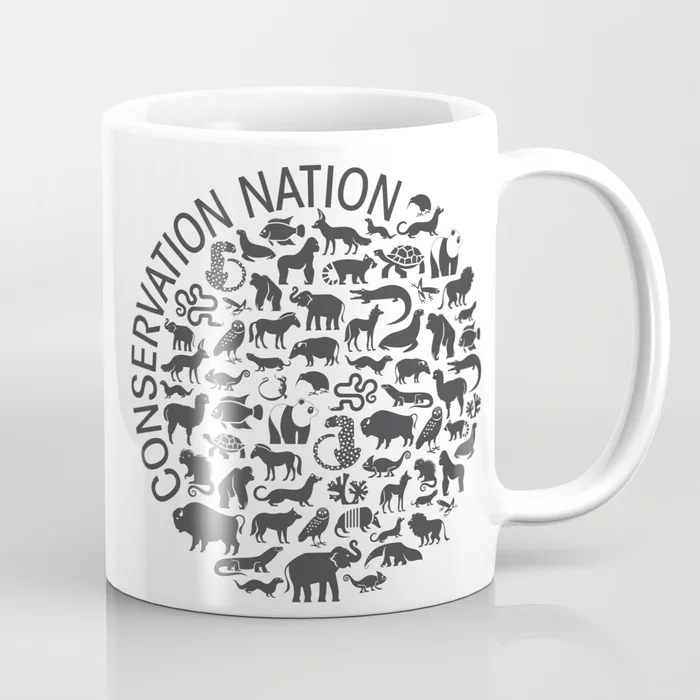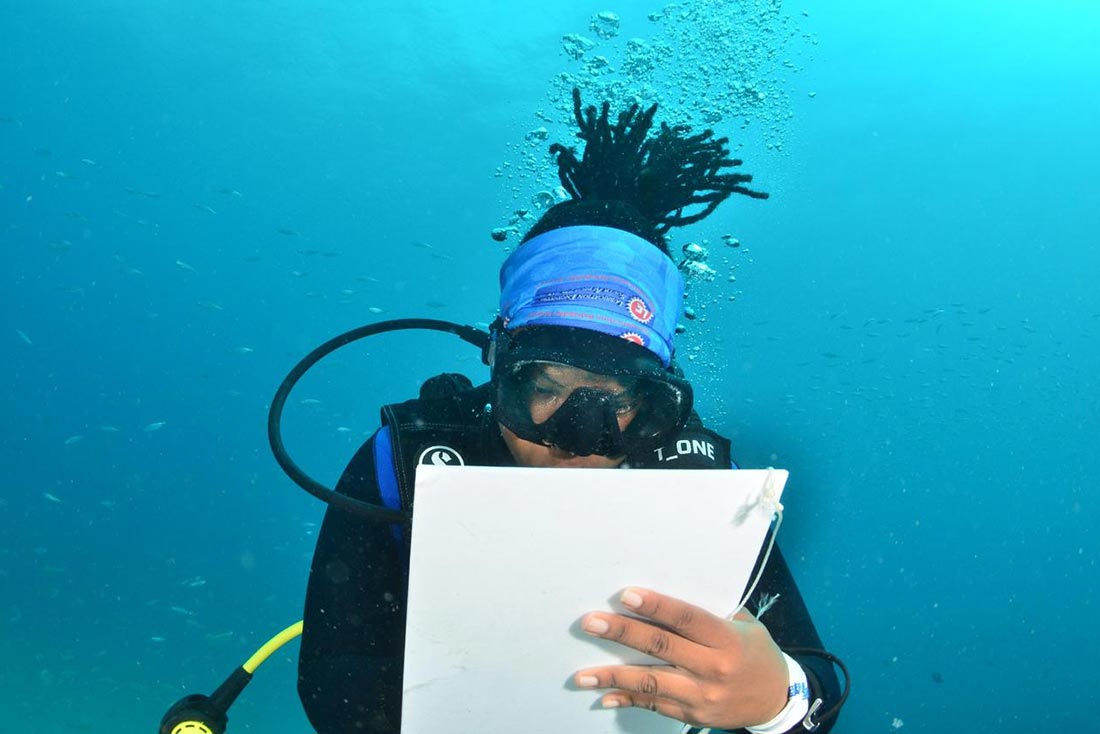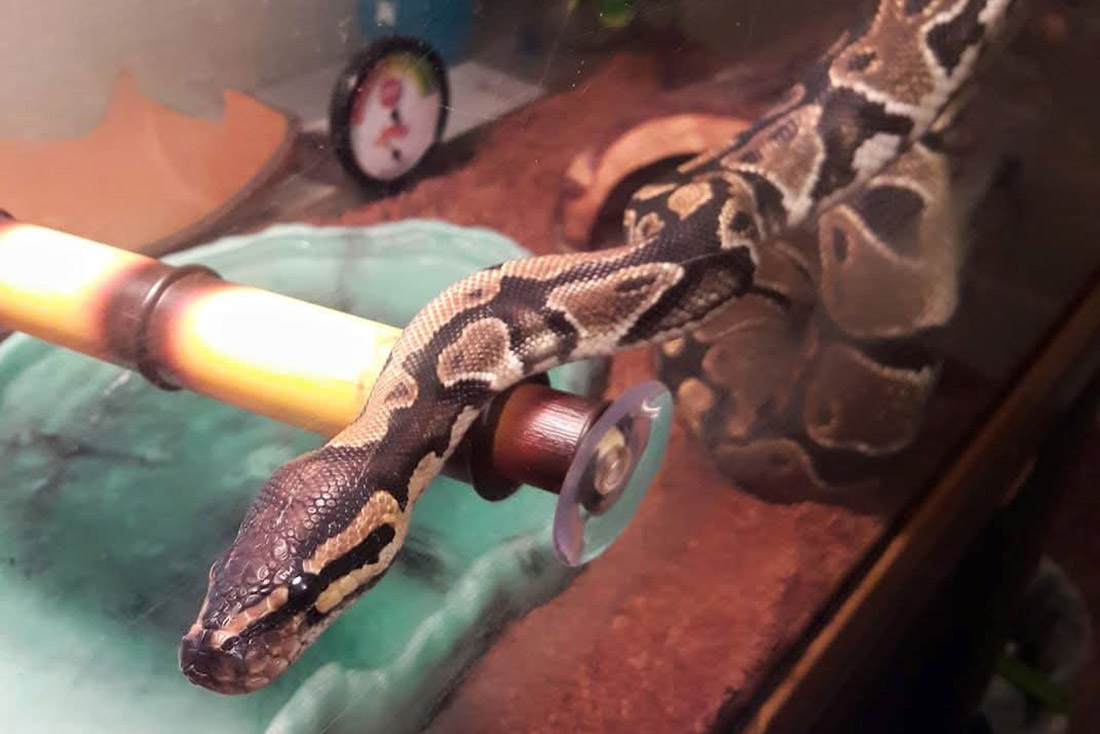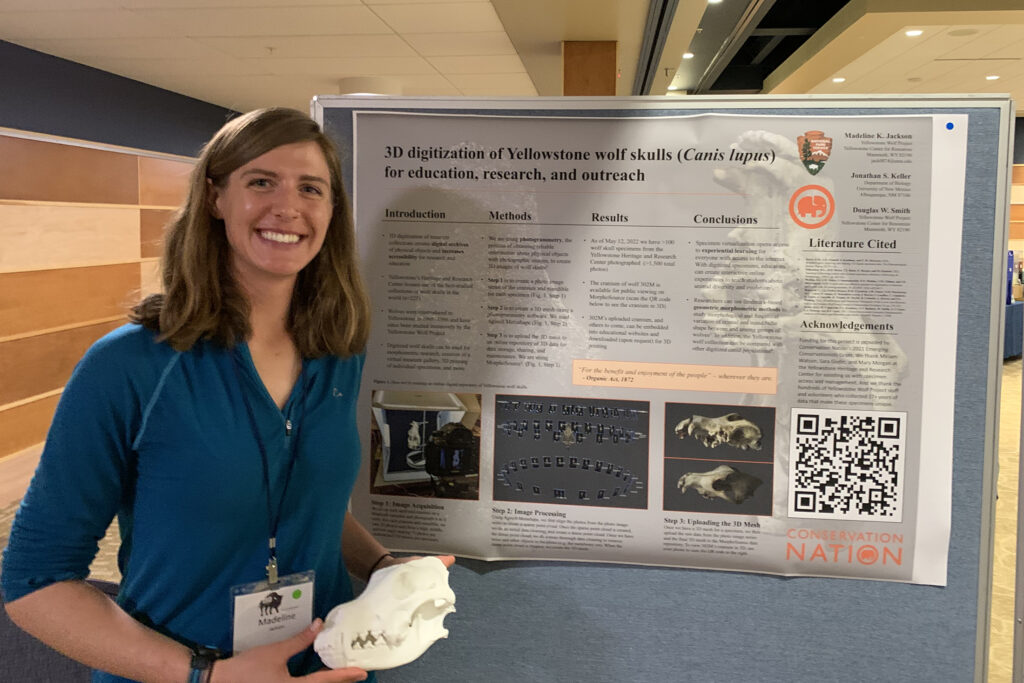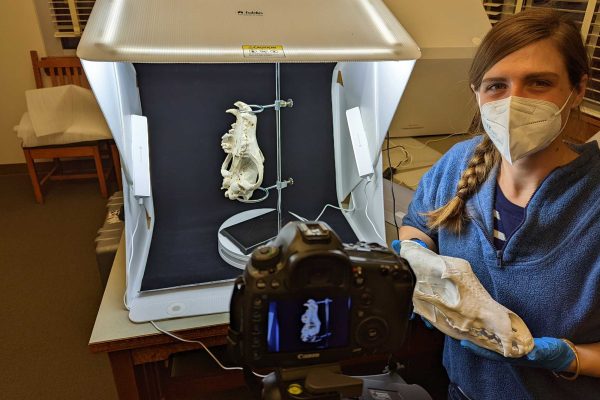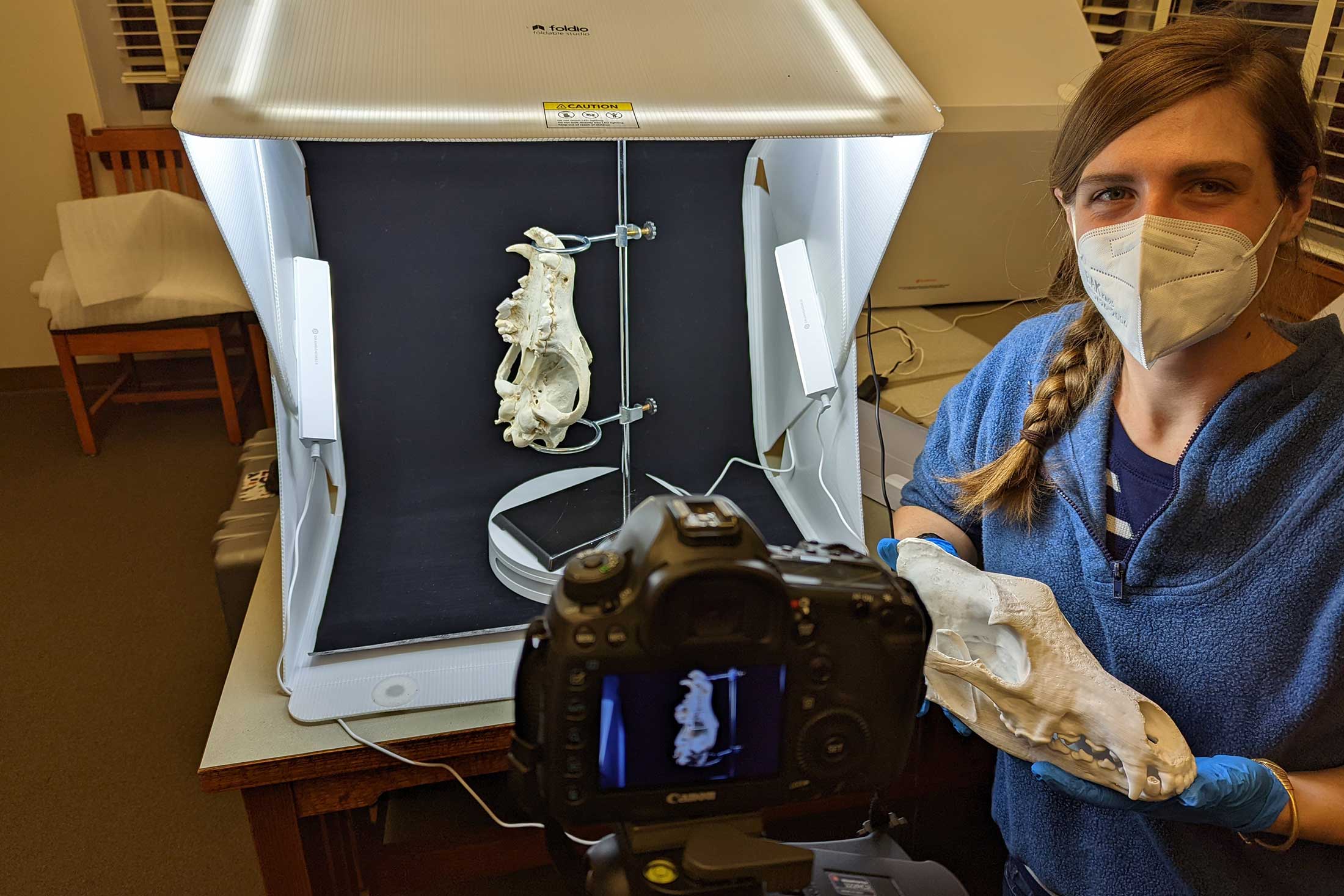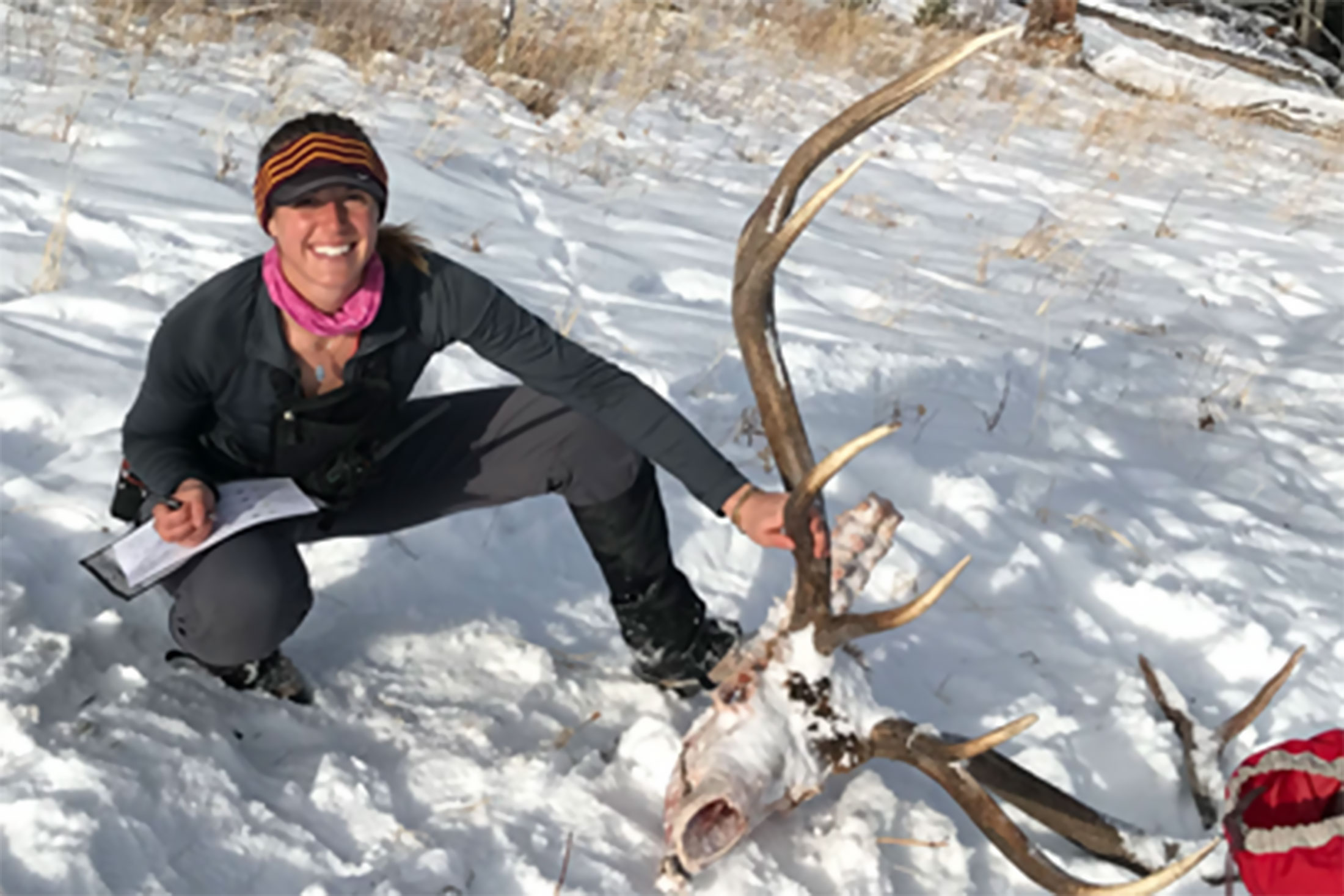An Update on Maddy Jackson’s Wolf Skull Digitization Project
As of the last update, Conservation Nation Emerging Conservationist Maddy Jackson has made significant progress on her wolf skull digitization project. She and her research partners have taken a whopping 150 photographs of each of 190 Yellowstone National Park (YNP) Heritage Research Center (HRC) wolf skulls. That is a lot of photos—28,500 in total!
Interact with a 3D image of the cranium (the skull minus the lower jaw bone) of wolf 302M below.
This past May, Maddy presented a poster about her project at the Scientific Conference on the Greater Yellowstone Ecosystem in Bozeman, Montana. It outlined how the virtual 3D skulls could potentially contribute to wolf conservation. For example, by making them accessible to the public via the MorphoSource digital repository, educators everywhere can provide their students with more interactive and experiential learning opportunities. Think about it—Maddy’s project has the potential to ignite a passion for wolf conservation in someone who might never have the chance to see a wolf in the wild! Side note: this goal isn’t just theoretical. In Maddy’s mid-year report, she highlighted her plans to share her project with Yellowstone Forever educators so they could teach park visitors about it this summer!
Her poster also detailed how the virtual skulls can be a tool for researchers to study the visual and functional differences in the cranium and jaw shape between wolves or other species in the dog family.
Maddy herself is one such researcher. One specific topic she is interested in exploring is if there have been any changes to the wolf skulls since their reintroduction period to the YNP in the mid-1990s. Wolf biologists in the YNP have found that wolves have recently begun to scavenge more on bison than they used to1. Maddy hypothesizes that this shift in diet might impact the shape and wear of the wolves’ teeth.
In her mid-year report, Maddy also expressed interest in using the digital skulls to research how the upper and lower teeth sometimes become improperly aligned in wolves. In discussing the topic with her advisors, she learned that this type of misalignment—called dental malocclusion—is likely not genetic2 and could be related to the wolves’ tendency to use their teeth when taking down large prey like bison and elk3. She also learned that dental malocclusion is an unlikely culprit in YNP wolf fatalities3. However, it will be interesting to see if Maddy’s future research uncovers if and how this type of dental abnormality might affect wolf health and hunting habits—two important factors that could impact the conservation of wolves and their prey.
In other news, Conservation Nation is proud to report that the University of Montana recently accepted Maddy into their wildlife biology graduate program, where she plans to study population and disease ecology with Dr. Angie Luis. This fall, she will begin working with a team to study the effects of biodiversity on disease transmission in a reservoir host population—specifically, the Sin Nombre hantavirus in deer mice.
Stay tuned for updates on Maddy’s future research projects and her wolf skull digitization project. Next up, she plans to present a poster at the International Wolf Symposium held October 13-16, 2022, at the Minneapolis Marriott Northwest in Minnesota. Visit the International Wolf Symposium website to learn more about this event.
1 Metz, M. C., Smith, D. W., Stahler, D.R., Vucetich, J. A., & Peterson, R. O. (2019, May 16). Temporal variation in wolf predation dynamics in Yellowstone: Lessons learned from two decades of science. Yellowstone Science, 24(1).
2 2B. Van Valkenburgh (personal communication, April 27, 2022) hypothesized that dental malocclusion is likely not genetic due to the low rate of inbreeding among YNP wolves. Additionally, she claimed that dental malocclusion is an unlikely culprit in wolf fatalities since most YNP wolves die from attacks by other wolves.
3 D. Smith (personal communication, April 27, 2022).




